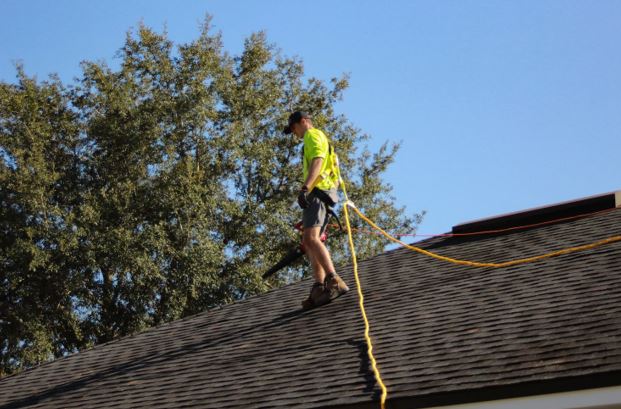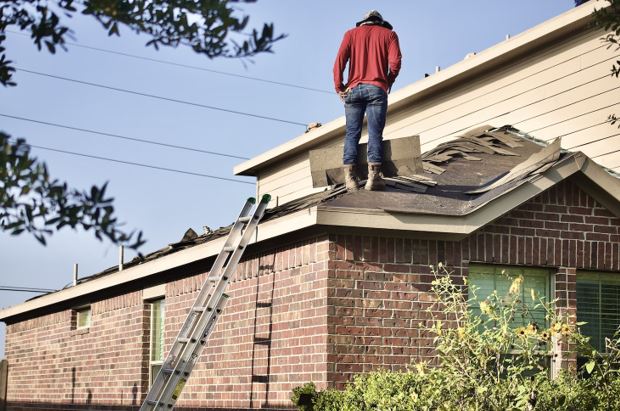Roofing is an integral part of a home’s structure and must be able to stand the test of time and weather. There are different types of shingles that you can use for your home, and knowing the differences will help you pick the right product for your building. You’ll need to take into consideration the materials and the installation process, as well as the longevity of the product.
Shingles
Roofing shingles are used to protect the roof of a house or structure. They are manufactured from several durable materials. Depending on the type of roofing shingle, they provide a decorative look and enhance the curb appeal of a house. Slate tiles are also an attractive and durable choice.
They are sensitive to temperature changes according to this study. Because of this, they are susceptible to cracking. Wood shingles are also attractive. Wood is commonly made of redwood, black locust, white oak, cedar, and honey locust. Although they are a less expensive choice, they can be a fire hazard in hot climates.
Ceramic shingles are also an option. This type of roofing is a good choice for areas with rainy weather. They are very popular in Europe. Metal roofing is another option, as it is fire resistant and energy efficient. It also protects the substrate from UV rays.
Underlayment
If you are about to install a roof, one of the most important things you should consider is the type of underlayment you use. Choosing the right one will help your roofing last for years to come.
Several underlayment products exist, such as rubberized asphalt, synthetic non-bitumen underlayment, and felt paper. The choice of underlayment will depend on the type of roofing you have and the local climate.
Rubberized asphalt is the most waterproof option. It will remain waterproof for at least 30 months. Synthetic underlayment is also good at keeping moisture from penetrating the roof. This underlayment is stronger than felt, and it’s easier to work with.
Choosing an underlayment that is waterproof is also important, especially if you live in an area that gets heavy rainfall. Using an underlayment that is water-resistant will minimize future maintenance. Another consideration is the cost. You can choose to pay more for a high-quality synthetic underlayment or opt for felt, which is slightly more affordable.
Underlayment for roofing comes in a variety of shapes, sizes and weights. Generally, it is installed on top of the roof deck. Some underlayments are flexible, while others are rigid. A good quality underlayment should be wrinkle free and not fold over the edge of the roof.
A few of the most common underlayment shapes are: circular, star, T-shape, lyrate, channel, and square. These underlayments can be imprinted with designs. Imprints are usually of 10- to 16-inch width.
Shingle shank length
One of the most important things you can do before you start any roofing project is to measure the shingle shank length (https://home.howstuffworks.com/different-types-roofing-nails.htm). This will help you lock the shingles into place. Incorrect nailing can result in leaks, cracked roofs, and even breakage.
Roofing nails come in many different shapes and sizes. The most common type of nails are smooth shanks. They are made of copper or aluminum and are generally inexpensive. However, they are not as sturdy as ring shanks.
Depending on the roofing material you use, you’ll want to choose a longer or shorter shank. Wood shingles will need a longer nail. Asphalt shingles and fiberglass shingles will need shorter nails. You’ll also need to consider the climate of your area. If you live in a windy climate, ring roofing nails will be better for you.
Roofing nails can be found in lengths from one to six inches. Make sure to use a nail that is at least twelve gauge. A longer nail can cause shingles to pop off the roof. Likewise, a nail that is too short can pierce the sheathing, leaving a tiny gap.
Before you start your roofing project, make sure you know how to correctly size your nails. This will ensure you get the most out of your investment. There are two main types of roofing nails: ring and smooth. Generally speaking, ring nails have an extra-large head and are stronger than their smooth counterparts.
Shingle flammability
If you live in a fire-prone area, you may want to consider fireproof shingles for your roof. Shingles are categorized by fire rating. The classification varies by brand and type of material.
There are four classes of fire-resistant shingles. Those with the most fire resistance are the best at preventing flames from spreading.
The most obvious choice is a class A rated shingle. A good class A shingle can withstand direct flames and not slide off the deck. It will also help prevent flaming from occurring on the underside of the roof.
Shingle lifespan protection warranty
According to a roofing expert in Delaware, one salient fact to keep in mind is that if the roof is more than 15 years old, repairs may not be the way to go. At a certain point, more and more shingles are going to fail due to age; the ones you’ve just noticed are just the first wave of what will become an ongoing issue.
The best first step is to get a professional roofing in Delaware up on the roof to do a close inspection. And if you’re planning on installing a new roof, you may want to consider some of the warranties available from your roofing contractor. There are three basic types of warranties: manufacturer, workmanship, and non-prorated. Each type is intended to cover a particular aspect of the installation process.
The manufacturer warranty is the most common type of roofing warranty. It is a guarantee from the manufacturer that the materials used to manufacture the shingles are free from defects. Depending on the manufacturer, the warranty may be limited to certain components of the roof, such as the ridge or hip shingles.
Some shingle manufacturers offer additional warranty options, such as a workmanship warranty. This type of warranty offers comprehensive repair coverage. In the event one component of your roof fails, the manufacturer will replace it.
A lifetime shingle warranty can be expensive, and the company may require a $100 transfer fee. You should check the details of the specific warranty from the roofing company before purchasing. An extended manufacturer’s warranty is another type of shingle warranty. Most asphalt shingle manufacturers offer at least a 25-year warranty. Many of them offer a 50-year warranty.
There are several other shingle warranties, some of which are more esoteric than others. For instance, some manufacturers have a “lifetime warranty” that will pay for the re-installation of a new roof for the life of the home. However, this is only available to the first owner of the property.




